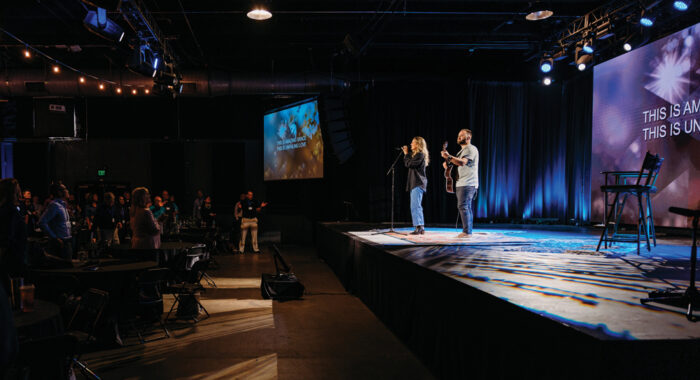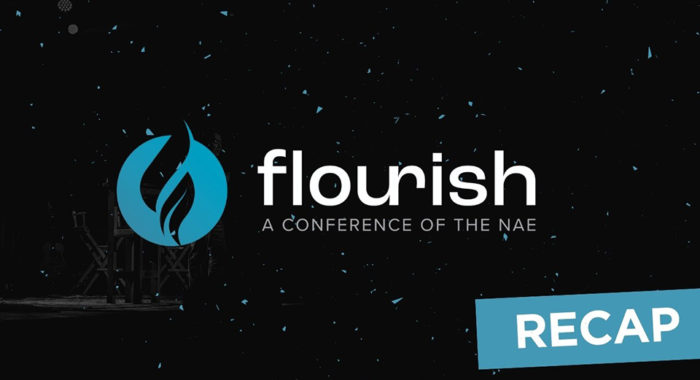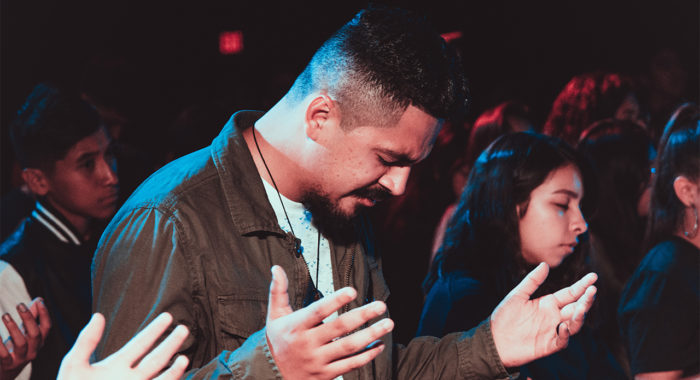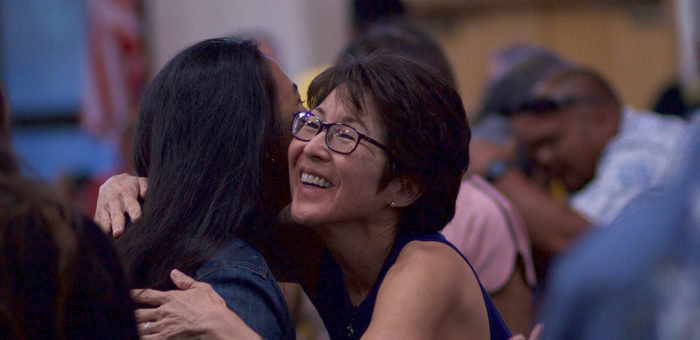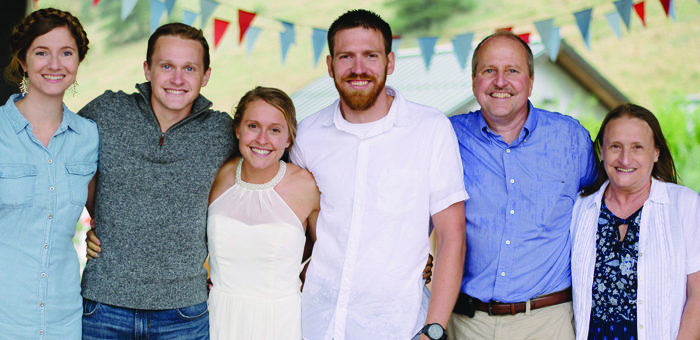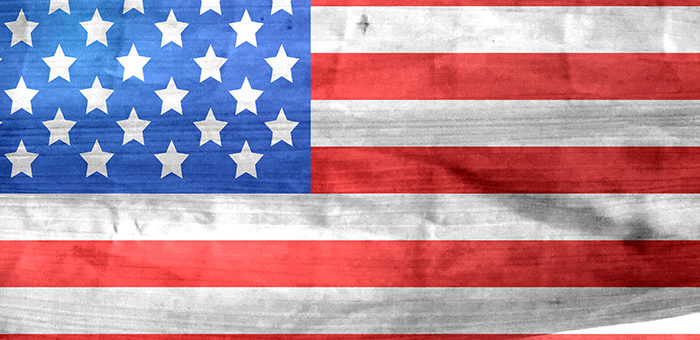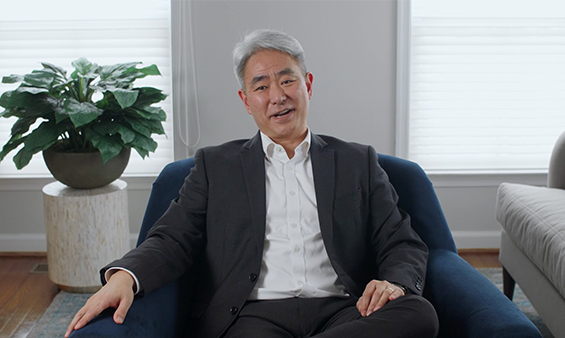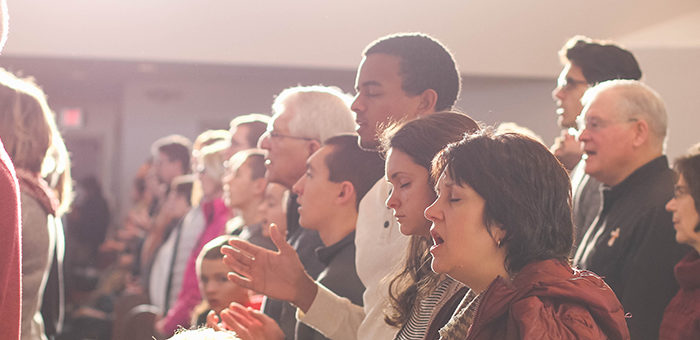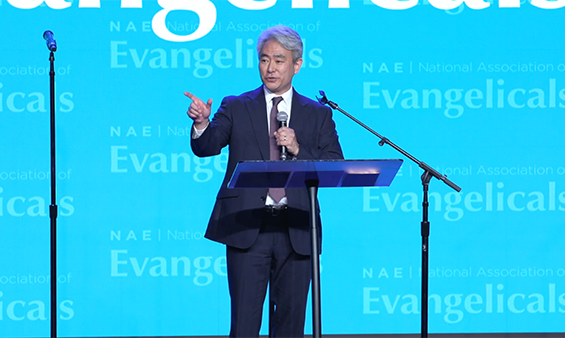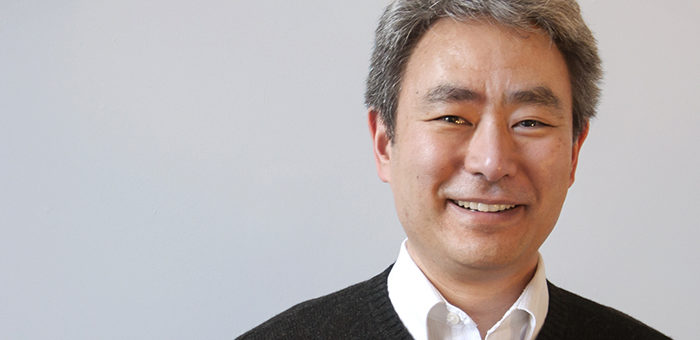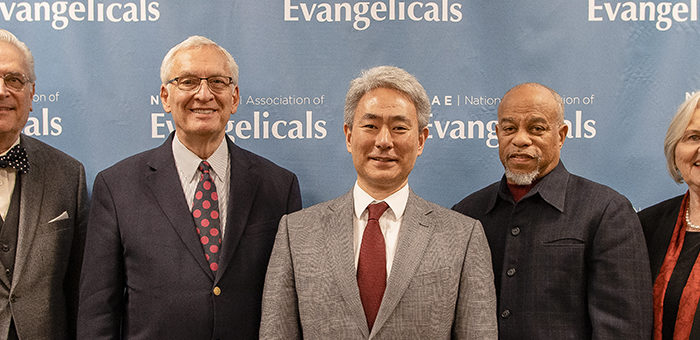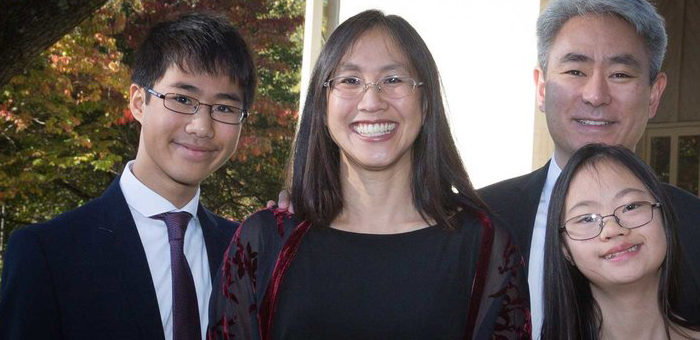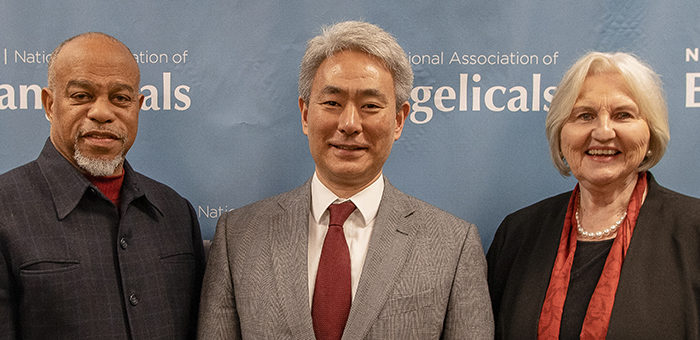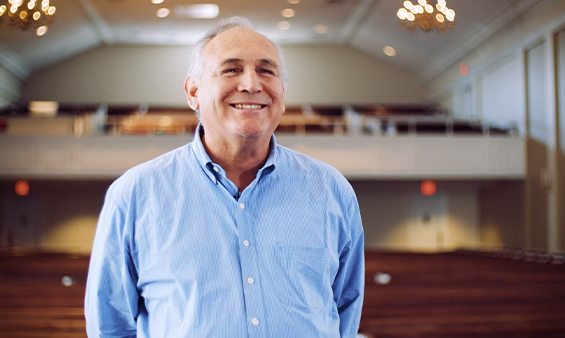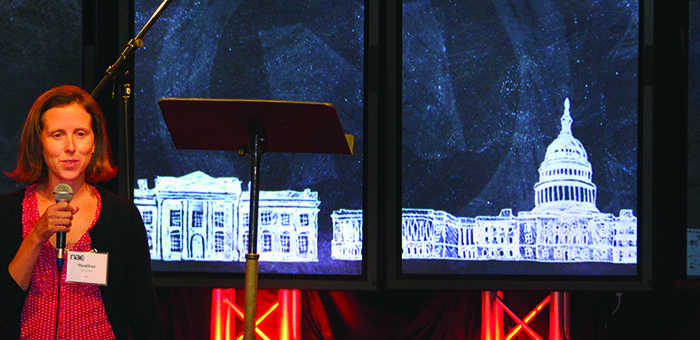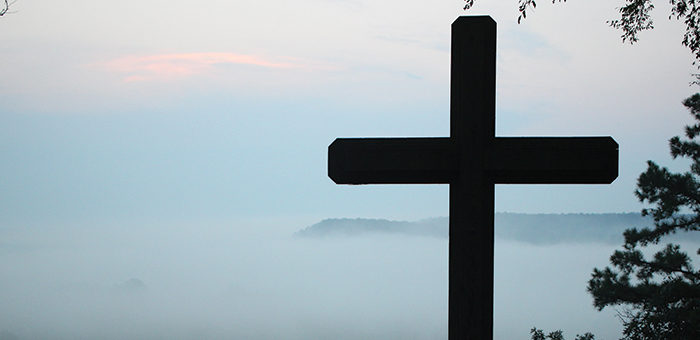
Here we share 75 quotes, historical details and interesting tidbits about the National Association of Evangelicals in honor of its 75 years of ministry.
- “Every family needs a kitchen table. The National Association of Evangelicals serves as convener and organizer and switchboard and shaper. It gives to the evangelical world and beyond a much-needed influence.” John Ortberg
-
In April 1942, evangelical leaders across the United States met in St. Louis to draft a constitution for an evangelical association. The following year, more than 1,000 participants representing nearly 50 denominations gathered in Chicago to officially create the National Association of Evangelicals.
-
The first president of the NAE was Harold John Ockenga, who also served as the first president of Gordon-Conwell Theological Seminary and Fuller Theological Seminary.
-
While the fundamentalist movement that preceded the NAE was largely the domain of Baptists, Congregationalists, and Presbyterians in the northern part of the United States, the NAE also embraced numerous Christians in the Pentecostal, Holiness, Reformed and Anabaptist traditions.
-
United Evangelical Action was the magazine of the NAE from 1942 to 1995.
-
The first of many actions of the NAE was to create an office in Washington, D.C., tasked to support chaplains, assist mission agencies with the State Department, champion religious broadcasting to the Federal Communications Commission, and defend religious liberty.
-
Clyde Taylor, a Baptist General Conference pastor in New England, former missionary to South America with the Christian and Missionary Alliance, and part-time professor at Gordon College, was the first director of the D.C. office and the dominant figure in the NAE over its first 30 years.
-
One of the NAE’s first initiatives was to respond to the needs of refugees in Europe by founding the War Relief Commission, later known as World Relief. World Relief continues to be a wholly owned subsidiary of the NAE and our humanitarian arm.
-
The most visited page on the NAE website addresses the popular question: “What is an evangelical?”
-
The decision of radio networks to stop selling time for religious broadcasting prompted the NAE to form the National Religious Broadcasters at its 1944 convention. NRB responded to the challenge, persuading the networks to reverse their policies. Radio continues to be an important medium for spreading the gospel.
-
“The NAE has stood true and faithful to the Evangel. NAE has lifted high the cross of Christ, NAE has declared the Resurrection, and NAE has believed in the power of the Holy Spirit.” Billy Graham
-
In the 1940s and 1950s, the NAE assisted missionaries in securing passports from the State Department and visas from the countries to which they were being sent. In later years, the NAE helped end the practice of CIA interrogation of missionaries.
-
Created in 1945 as the Evangelical Foreign Missions Association to handle the special needs of missionaries and their agencies, Missio Nexus is one of several organizations with roots in the NAE.
-
By the time the NAE celebrated its fifth anniversary, it had regional offices in Detroit, Minneapolis, Portland and Los Angeles, in addition to its Washington, D.C., office, which remains today.
-
Harold Smith, now president and CEO of Christianity Today, once served as NAE director of information and editor of NAE’s United Evangelical Action magazine.
-
In 1956, the NAE adopted a resolution calling on evangelicals to use “every legitimate means to eliminate unfair discriminatory practices” in order to provide equal rights and opportunities for all Americans.
-
President Dwight Eisenhower was the first president of many to welcome an NAE delegation to the White House.
-
The NAE is a member of the World Evangelical Alliance, which brings together the evangelical alliances of 129 countries. For many years the NAE hosted WEA offices at the NAE headquarters in Wheaton, Illinois. Tom Correll, NAE global church representative, currently acts as the liaison between the NAE and the WEA.
-
The NAE held its first Federal Seminar (now called the Christian Student Leadership Conference) in 1956, introducing generations of evangelical collegians to opportunities for public and government service.
-
In 1957, the NAE formed a committee to explore the development of a new translation of the Bible, resulting in the New International Version. Today the NIV is the most popular and best selling Bible in the United States and around the world, and the only one to displace the King James Version in about half a millennium.
-
“The National Association of Evangelicals serves a vital and constructive role in providing evangelical cohesion. We need strong voices today, defending what was the cause of the Reformation: the continued reform of the holy, catholic, apostolic church. Thank you for being willing to stand for Christ in these difficult times.” Chuck Colson
-
The NAE held annual conventions for many years in order to bring together evangelicals from across the United States and inspire cooperation for the advancement of the gospel.
-
At the 1960 meeting of the NAE’s Commission on Evangelical Action, members discussed the top challenges facing American evangelicals: communism, IRS pressure on ministers who preached about politics, alcohol on airplanes, and Hollywood’s “attacks on evangelical Christianity.”
-
Billy Graham was a personal friend of many early leaders of the NAE and credited the network for playing a large role in the effectiveness of his early crusades. Graham regularly met with NAE leaders and spoke at NAE events.
-
In a 1970 resolution, the NAE pledged “to support every legitimate effort to maintain balance in ecology, preservation of our resources, and avoidance of the cluttering of our natural beauty with the waste of our society.”
-
The NAE Board of Directors includes the CEOs of 40 member denominations and representatives of a broad array of evangelical organizations including missions, universities, publishers and churches to comprise more than 100 top American evangelical leaders.
-
Starting in 1972 with a board resolution, the NAE advocated for the ban of smoking on airplanes. Congressional action 15 years later led to such a ban.
-
The Evangelical Chaplains Commission, established by the NAE in 1944, provides support and endorsement for evangelicals to minister as chaplains in the military and other institutions. The Commission also connects the chaplain ministries of NAE denominations, making it the largest representative body of chaplains in the U.S. Armed Forces and Veterans Administration.
-
Billy Melvin served as NAE executive director for 28 years, retiring in 1995. During his tenure, 15 denominations joined the NAE and Presidents Ronald Reagan and George H. W. Bush spoke to NAE audiences.
-
The NAE passed a resolution in 1973 supporting Vietnam veterans. It said in part: “We urge upon our entire nation the importance of seeing to it that all Vietnam veterans are effectively reabsorbed into the mainstream of American life, into our churches and our economy.”
-
Robert Dugan was the leading figure in the NAE’s Washington, D.C., office from 1978 to 1997. Under his leadership, the NAE gained significant influence on Capitol Hill. Dugan was instrumental in the passage of bills on drunk driving, church audit procedures and equal access to public school facilities for religious organizations.
-
The Washington Insight newsletter, founded by Robert Dugan, was published monthly from 1979 to 2007, providing updates on public policy issues of concern to evangelicals.
-
In the 1980s, NAE Executive Director Billy Melvin sent a fundraising letter each summer saying that if each NAE constituent would just send in a nickel, the NAE would make its budget.
-
President Ronald Reagan delivered his famous “Evil Empire” speech at the NAE’s 1983 convention in Orlando, Florida.
-
The NAE conducted a multi-year research project in the 1980s on Peace, Freedom and Security Studies, critiquing the rhetoric of both the Right and the Left regarding threats to national security and world peace. The final report is a testimony to the NAE’s ability to engage contentious issues in an irenic manner.
-
In 1991, a series of dialogues with leaders of the National Black Evangelical Association led to an NAE resolution and a joint NAE-NBEA declaration on racism.
-
At the NAE’s 50th anniversary celebration, Billy Graham, standing for nearly two hours, met and greeted every member of the NAE board before flying to North Korea on an humanitarian mission.
-
In his acceptance speech for NAE president in 1992, Donald Argue foreshadowed coming changes when he suggested that NAE members were “too old, too male and too white.”
-
As part of his advocacy on the Religious Freedom Restoration Act, Forest Montgomery, NAE legal counsel at the time, passed out “Religious Liberty for All!” pins all over Capitol Hill. In the end, only three senators voted against the bill’s passage.
-
The NAE was part of a broad coalition that researched, drafted and advocated for the Religious Freedom Restoration Act. In remarks at the bill’s signing, then-Vice President Al Gore said, “When you have the National Association of Evangelicals and the American Civil Liberties Union, the National Islamic Prison Foundation and B’nai Brith … we’re doing something right today.”
-
“When it comes to advancing religious liberty for all persons of any faith over the past 25 years, the NAE can only be described as indispensible.” Steve McFarland, legal counsel for World Vision
-
Don Argue, former NAE president, and Richard Cizik, former NAE vice president of government affairs, were selected to participate in the 1998 Religious Leaders’ Delegation to the People’s Republic of China, a first of its kind diplomatic initiative by the U.S. government to a totalitarian state.
-
The NAE played a leading role in supporting the Religious Land Use and Institutionalized Persons Act, which Congress passed in 2000 and which protects religious congregations from discriminatory zoning rules and upholds the religious freedom of prisoners. The NAE continues to file amicus briefs with courts in defense of rights granted under RLUIPA.
-
Among NAE’s members are some of the world’s leading humanitarian organizations, including Compassion International, World Vision and The Salvation Army. The Accord Network, which brings together more than 100 Christian relief and development organizations, is an NAE affiliate member.
-
The Evangelical Project for Public Engagement was initiated at the March 2001 NAE board meeting and resulted in a major volume titled “Toward an Evangelical Public Policy” and the abbreviated guide for engagement, “For the Health of the Nation.”
-
“For the Health of the Nation” was adopted by the NAE Board of Directors in 2004. Along with board resolutions, the publication serves as the platform for public policy work and offers a biblical basis for religious freedom, sanctity of life, marriage, poverty, creation care, peace, human rights and racial justice (added in the 2018 version).
-
“For the Health of the Nation” was presented on Capitol Hill in March 2005, where the signatures of 100 plus evangelical leaders were released. A remarkable variety of evangelicals affirmed the document including Rick Warren, James Dobson, Charles Colson and Richard Mouw.
-
The Evangelical Chaplains Commission currently provides direct endorsement and support for 93 chaplains — most of whom are chaplains in the military, though some serve in health care and law enforcement.
-
United Nations Secretary-General Ban Ki-moon spoke at the Global Leaders Forum, an event organized by the NAE and Micah Challenge USA in 2007.
-
Richard Cizik, former NAE vice president of government affairs, was named to the “TIME 100” list in 2008 for being among the most influential Americans.
-
The Washington Insight newsletter was rebranded in 2008 as NAE Insight and broadened to cover ecclesial topics in addition to public policy. In 2015, the eight-page NAE Insight was replaced by Evangelicals magazine.
-
While a student at Wheaton College, Dan Coats attended the NAE’s Christian Student Leadership Conference in Washington, D.C. He went on to serve as a U.S. congressman, senator and ambassador, and currently serves as director of National Intelligence.
-
The 2009 NAE board resolution on immigration provided the basis for robust evangelical support for immigration reform and led to the formation of the Evangelical Immigration Table, which advocates on behalf of refugees and immigrants.
-
“I see the NAE speaking out on the refugee crisis and speaking on behalf of creation care and immigration reform. Those are issues that 20 years ago evangelicals weren’t known for thinking about…. The NAE, I believe, has really helped elevate issues that are real important for the most vulnerable in our society.” Nicole Baker Fulgham
-
Signed by thousands of pastors, the NAE Code of Ethics for Pastors provides a professional standard of conduct for ministers. The companion resource, the NAE Code of Ethics for Congregations and Their Leadership Teams, equips church leadership teams as they relate to their pastors, congregation and community.
-
The NAE endorses the only operational chaplain in the Federal Bureau of Investigation, Erik Myhrberg.
-
From 2009 to 2012, the NAE conducted research on young evangelicals and their beliefs and practices on sex and abortions. One result of that project was the “Theology of Sex” resource created to help Christians understand and cherish human sexuality, build strong families and celebrate the gift of life.
-
Research on evangelicals often varies due to the methods used to identify evangelicals. In response to that challenge, the NAE and LifeWay Research developed a tool to provide a consistent standard for identification of evangelical belief in 2015. It has become LifeWay Research’s most common rubric.
-
Dorothy Boorse, associate professor of biology at Gordon College, analyzed scientific data, collected reports from development workers, and summarized the reflections of theologians to create the discussion paper, “Loving the Least of These: Addressing a Changing Environment,” published by the NAE in 2011.
-
Several denominational leaders say that the NAE’s Denominational Executives Retreat is the one event they will not miss every year. One leader noted, “This is where I learn how to do my job.”
-
In 2015, President Barack Obama participated on a panel organized by the NAE and the Initiative on Catholic Social Thought and Public Life at Georgetown University.
-
Written by leading evangelicals and scientists (in partnership with the American Association for the Advancement of Science), the NAE’s “When God and Science Meet: Surprising Discoveries of Agreement” publication brings science and faith to the same page and is designed to help church leaders address their congregants’ curiosity and concern about science.
-
Starting in 2016, the NAE has organized Pray Together Sunday, encouraging churches around the country and across denominational lines to commit to a time of
prayer for our nation one Sunday in July. -
For many years, participants in the NAE Washington Insight Briefing came to Washington, D.C., to be informed and to advocate on key issues facing our nation. The NAE continues this tradition through the Washington Briefing for NAE board members and other evangelical leaders.
-
This is Leith Anderson’s second stint as NAE president — first serving from 2002 to 2003 as interim president and now serving from 2006 to present.
-
For over two decades, churches across the nation have used the NAE’s Thru the Bible Reading Guide to help their members make God’s Word part of their every day. One year, staff members accidentally left off the last chapter of Revelation. Calls flooded the NAE office.
-
Prior to joining the NAE staff in 2009, NAE Vice President Galen Carey was a longtime World Relief employee. His concern for the vulnerable and collaborative spirit led to the creation of several coalitions, including the Evangelical Immigration Table, Faith for Just Lending, Evangelicals for Peace, and Circle of Protection.
-
In April 2014, the State Department sent NAE President Leith Anderson on a diplomatic mission
to the Central African Republic where he met with evangelical, Catholic and Muslim leaders in an effort to end a surge in violence and killing. The visit is credited with saving lives and laying the groundwork for peace in the nation. -
Countless scholarly and popular books mention the NAE and its influence on culture. The books, “Cooperation Without Compromise” (1956) by James DeForest Murch and “Standing Up, Standing Together: The Emergence of the National Association of Evangelicals” (1992) by Arthur H. Matthews, focus exclusively on the early years of the NAE.
-
From 2012 to 2013, NAE President Leith Anderson served on President Barack Obama’s Advisory Council on Faith-Based and Neighborhood Partnerships.
-
The NAE’s breadth and diversity of partners allow us to organize unique gatherings that encourage, resource and enrich leaders in the evangelical community. The NAE Talk is one such event that serves as a safe space for high-level evangelical leaders to discuss difficult issues, such as sexuality, race and Islam.
-
In 2016, NAE President Leith Anderson and NAE Vice President for Government Relations Galen Carey co-authored “Faith in the Voting Booth” to show how better informed, faith-directed voting is both possible and needed in our country.
-
Hosted by NAE President Leith Anderson since 2015, Today’s Conversation podcast gives an opportunity for listeners to hear from experts on a range of topics. The most popular episodes featured Claude Alexander on What White Christians Need to Know About Black Churches; Greg Johnson on What’s Up With Mormons?; and Joseph Cumming on Understanding Islam From an Evangelical Perspective.
-
Recognizing the widespread financial challenges of evangelical pastors, the NAE Financial Health project was created in 2016 to help address these issues. Over 200 pastors have started going through the online training that launched this September.
-
“Congratulations to the National Association of Evangelicals on your 75th anniversary. Thank you for spreading God’s message of love and mercy and for putting hope in so many hearts.” President George W. Bush



 View All Articles
View All Articles 



